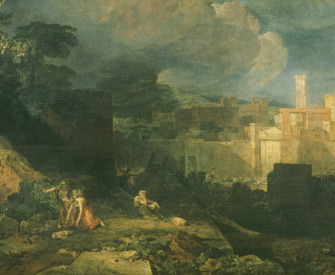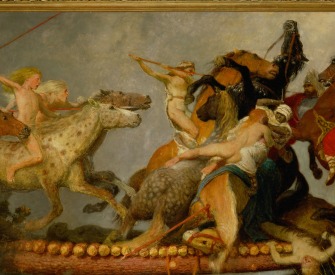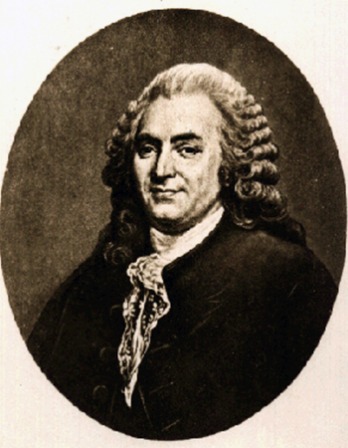Dragons are quite unknown in the Abyssinian Sea and in its numerous estuaries and bays. They are most frequent near the Atlantic. Different opinions have been advanced as to what the dragon is. Some believe that it is a black wind in the bottom of the sea, which rises into the air, that is to say, the atmosphere, as high as the clouds, like a hurricane whirling dust aloft as it rises from the ground, and destroying vegetation. The shape of the dragon becomes longer the higher it ascends in the air.
Some people believe that the dragon is a black serpent which rises into the air, the clouds are at the same time black, all is dark, and this is succeeded by a terrible wind.
Some are of the opinion that it is an animal which lives in the bottom of the sea, and that when it is haughty and overbearing, God sends an angel in a cloud, who draws it out. It has the shape of a black shining serpent. When it is carried through the air, it goes so high that it does not touch anything with its tail, except perhaps very high buildings or trees; but it frequently damages many trees.
There are various other popular traditions respecting the dragon, which are recorded by biographers of Muhammad and other prophets, but we cannot insert them all here. They say, for instance, that the dragons are black serpents which live in the desert, whence they pass by rivers swelled by rains into the sea. They feed there on sea animals, grow to an immense size, and live a long time. But when one of them has reached an age of five hundred years, it becomes so oppressive to sea animals that there happens something like what we have related as being the account of Ibn Abbas. Some, they state, are white, and others black like serpents.
The Persians do not deny the existence of dragons. They believe that they have seven heads, call them al-Agorghan, and allude frequently to them in their tales. God knows best what the dragons really are.
From The Meadows of Gold and Mines of Gems. Called by one biographer the “imam of encyclopedism,” al-Masudi was born in Baghdad around 893. As a young man, he traveled around Persia and the Caspian Sea before settling in Egypt, where he wrote most of his thirty-six works. Aside from this history of the world and a volume of corrections, all are now lost, including The Secret of Life and Reports of the Times and the Events into Which Past Communities, Defunct Races, and Disappeared Empires Have Sunk.
Back to Issue




